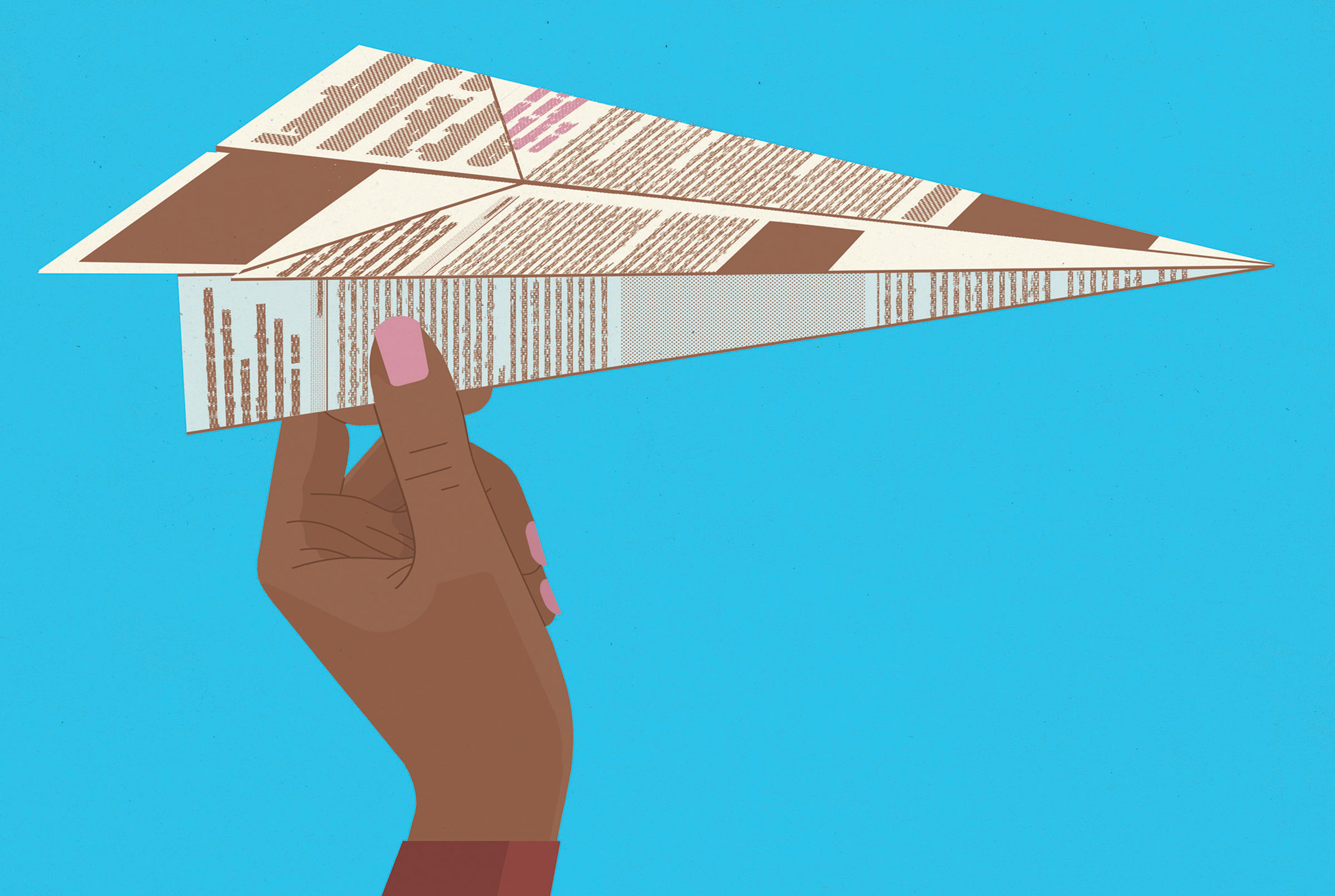
Longstanding journalistic maxims would have a reporter remain disengaged while gathering the facts. But pursuing the whole truth means considering the humanity of one’s subjects—and of oneself. Lived experience can help a reporter empathize and deepen their work in the service of telling stories that accurately reflect the world. After an intense year of reporting on stories about the struggles endured by people who share their identities, TIME journalists reflect on the lessons they will carry forward in their work.
Taking small actions
Nadia Suleman, editorial producer

On May 26, 2020, I signed on to Slack as usual: Nadia on syndication. My role as an editorial producer at the time consisted primarily of building posts with articles from partners like the Associated Press. That day was no different. I was working from my hometown outside of Grand Rapids, Mich., where I’d relocated to be closer to my family during the pandemic. But what had begun as an escape back to familiarity quickly became one of the most untenable months of my career.
That morning, after learning there was bystander footage of an officer kneeling on a Black man’s neck in Minneapolis, I felt sick. I understand the news cycle; stories about Black trauma break then quickly fade. Filled with dread, I went to pull one of the AP’s initial reports, as I was asked. It was then that I read that the man in the video, George Floyd, had repeatedly told the officers, “I can’t breathe.” It wasn’t the first time we’ve heard that phrase.
I have no desire to watch videos of Black death—the ending never changes. But while I avoided watching the full video of Floyd’s murder, I saw enough clips in the context of my work to absorb the horror. And in the 24 hours that followed, I fixated on gruesome images and videos—protesters of various identities who had come together to declare enough is enough being struck, tear gassed and shot with rubber bullets. Witnessing police brutality and modern-day lynchings on my screen just reminded me how expendable Black folks are perceived to be.
As a junior staffer, I didn’t have the privilege of escaping—updating that post was my job. “Checking in” would later become an expected newsroom practice, but at the time, the well-being of my Black colleagues and me seemed like an afterthought. I wasn’t offered time off or even a moment to step away and have a coworker take the reins. Instead, I felt like I needed to desensitize myself to my own oppression. There were no Black editors around to tell me otherwise. Already isolated because of the pandemic, I grew numb, then resentful because policy barred expressing views on anything seen as political. (Our guidelines now allow protesting for human rights.) Still, I felt I had to do something—I knew that if Black people weren’t involved in the telling of our stories, they could be botched.
Despite my place in the hierarchy, I did harness a small yet crucial power in syndicating articles, often the first pieces TIME will publish on breaking news: I had a say in the headlines. As the largely peaceful demonstrations went on in the days and weeks after Floyd’s death, I saw two words again and again in the default text: violent and riot. These dog whistles underscored the media’s interpretation of the Black resistance: We were the aggressors. Too loud, too combative, too Black. So rather than using the provided headlines, I’d write ones without the coded language.
Although it isn’t common practice to include the names of people unknown to the public, given the long-standing erasure of Black history, I made a point to write them: George Floyd, Ahmaud Arbery, Breonna Taylor. But I was torn between wanting to make sure they were remembered and worrying about contributing to the idea that they were martyrs, that their deaths were necessary for us to inch closer to equity. I felt alone in the burden of making these choices, as the only Black person who would touch the stories.
I don’t have all the answers, nor do I have the power to fix things on my own. None of us do. But what I have learned is that even small actions compound. Over the past year, after asserting myself more, I’ve been given more responsibilities and invited into conversations I was shut out from before. I’m no longer merely writing headlines for other people’s stories—now I’m helping to launch projects that I’m passionate about. I’m learning to be confident in my perspective, to use my voice, and to demand what I deserve.
An embrace of wholeness
Suyin Haynes, senior reporter
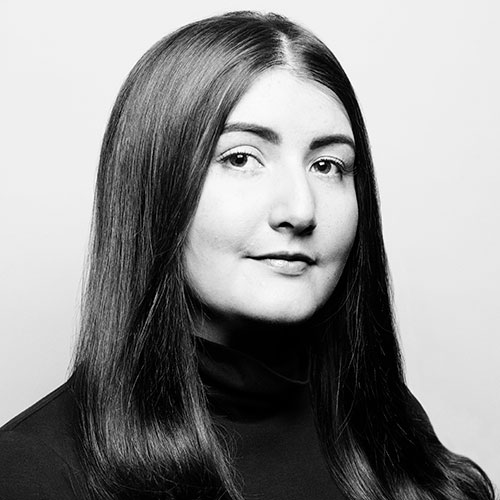
“What’s your racial background?” my colleague messaged me earlier this year, as she filled out an application that required this information. The categories that should have felt most relevant to me were “Asian,” “White” and “Other,” yet none of them seemed quite right. “‘Other’ is fine,” I replied, before pausing. “Actually, could you put ‘Asian’ please? ‘Other’ just feels a bit odd.”
For me, being biracial is wonderful and complicated. But thinking about those categories was just one example of the ways that, in a world fixated on sorting people by race, I have been made to feel too much of one thing, not enough of another or flattened under the umbrella of “Other.”
As a Malaysian-British woman, I’ve always been conscious of my proximity to whiteness and the way I’m usually racialized, having benefited from white privilege for most of my life. Sometimes I’ve felt uneasy or uncertain in fully voicing my identity as Asian, a hesitation rooted in the self-consciousness that I am less likely to experience the physically violent manifestations of racism in ways that others do. I’ve come to realize that that type of thinking is a form of invalidation, of erasure, of preoccupying myself with fears about Asian hate over much-needed Asian joy. Over the last year and through covering these issues more deeply, I’ve leaned in to claiming—and celebrating—my polyphonic identities.
In March 2020, I wrote about the rise in anti-Asian racism against the backdrop of the escalating coronavirus pandemic. A year later, I tried unsuccessfully to stop myself from crying at the start of an interview for a story about global anti-Asian hate crimes. It was hard to accept how little had changed in the space of 12 months. The interviewee, also a Malaysian-British mixed-race woman, could tell that I was not O.K., and we took a moment to pause before she went on the record. I let myself breathe. I didn’t need to explain or justify why. She understood and could feel it too.
The past year has taught me to be more comfortable with acknowledging the privilege I hold, as well as the fact that that privilege doesn’t mean I’m insulated from racism or its painful toll. It’s O.K., it’s healthy, to be vulnerable and to embrace these feelings. A group of biracial employees at TIME came together last summer, calling ourselves “Tuta,” which means “whole” in the international auxiliary language of Esperanto. I’m trying to keep that word in mind as I move forward, to remember to feel, and be, not “Other,” but whole.
Identity as expertise
Sanya Mansoor, reporter

In 2017, while reporting on the Texas legislature, I attended a Homeland Security hearing held by Republican lawmakers on how to protect the state from “radical Islam.” The panel came days after a legislator sent out a survey to mosques across Texas, posing questions about their beliefs and their commitment to remain nonviolent.
As the session was wrapping up and the crowd began to disperse, a white TV reporter standing next to me asked the legislator if he would hold a similar forum on radical Christian or Jewish groups. A former state lawmaker who overheard the remark cursed him out for raising the idea, and another woman nearby questioned how the reporter could even compare these religions, insinuating that Islam was inherently more violent. When I asked her how she could make that suggestion, she demanded to know how I could support the religion as a woman.
The attack felt personal, but while I knew her argument was Islamophobic and wrong, I also questioned myself. I felt unprofessional for taking off my stoic reporter hat and engaging with someone’s hateful dialogue on that level. I was so flustered that I had to leave the room. Outside, a state trooper asked me if I was O.K. I said I was, and I still had a story to file, which I did later that day. But the experience showed me that we can’t always compartmentalize when reporting on our own identities.
Over the last few years, I’ve realized we don’t have to. Our lived experiences are not emotional biases, but a source of expertise. I’ve reported stories about the Muslim and African ban as well as anti-Blackness within the Muslim community and brought to them a level of authority. I understand that Muslims are not a monolith, but my own experience with religion and the way hatred toward it manifests helps inform the approach I take—from the people I interview to the way I frame stories.
I’ve learned that I can be a better storyteller if I think about what I would want to read, rather than trying to write every piece for a white audience. In a story about a pandemic-era Ramadan, for instance, I went beyond the “not even water?” comment Muslims so frequently hear when they tell non-Muslims they are fasting and focused instead on more nuanced experiences. I contacted Khalid Latif, the imam who often leads the Friday prayer I attend at New York University, and asked if he could help me find Muslims willing to discuss their pandemic Ramadan. Over the next few days, my inbox was flooded with more than 100 stories from those who likely trusted Khalid the way I did.
One of several stories that made it into the piece was about a Muslim doctor who shaved his beard—which he’d kept for religious reasons—so he could properly wear PPE while treating COVID-19 patients. As he sat with the body of a Muslim man who had been declared dead, the doctor read him a special prayer Muslims say after someone has passed away because he wasn’t sure the patient would get a proper funeral. As a Muslim, I understood the weight of that prayer—“inna lillahi wa inna ilayhi raji’un” (“Truly, to Allah we belong and truly, to Him we shall return”)—and that this recitation spoke to the depth of the service the doctor provided. It was an act I highlighted in my story because I intrinsically knew how it would have brought the patient’s family comfort, in a way that a non-Muslim reporter likely wouldn’t.
Bringing this level of firsthand knowledge isn’t something I can put on a resume, but it’s just as valuable to my work as a journalist, if not more.
A commitment to stories that matter
Josiah Bates, staff writer
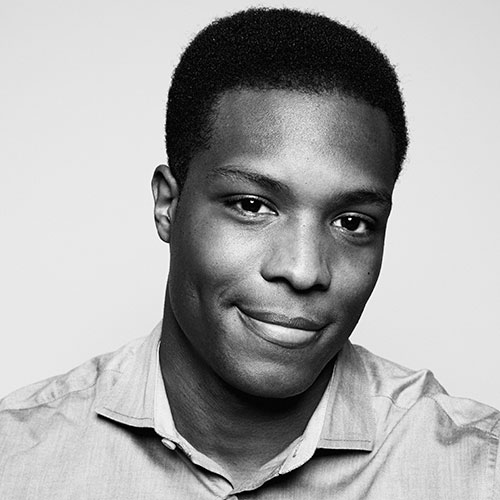
Before May 2020, I struggled to get my pitches greenlit. I had story ideas about social- and criminal-justice issues as they related to the Black population in the U.S., but they rarely moved forward. If I pitched a piece about gun violence and its impact on the Black community, I was told that there needed to be a “national peg” for us to pursue it. If I pitched a story on a police shooting of a Black person that happened in a small community, I was told it was “too local.” I was given a bevy of reasons these stories were not assigned, which made me believe I just needed to work harder and come up with better pitches.
After the murder of George Floyd, there was a shift. Now I get more positive feedback when I pitch stories on criminal justice and social issues related to the Black community, and it appears that there’s a concerted effort to cover these subjects. But it was jarring to see our approach change so rapidly, from largely ignoring these stories to centering them.
As a Black man in this country, I know firsthand the importance of issues like criminal justice, policing and gun violence and how many people are affected. That’s why I put the onus on myself to try to cover them thoroughly. But unless there are more diverse voices and perspectives in decision-making positions at mainstream news outlets, critical stories will continue to be left untold.
It shouldn’t take a highly publicized tragedy like Floyd’s death for publications to consistently cover these problems that have negatively impacted minority communities for hundreds of years. So while I welcome the attention to these issues, I also wonder about the motivation. Did media companies wake up to the reality that so many of us have always known? Or are they trying to appear a certain way in the public’s eyes to avoid criticism? My fear is that mainstream media, TIME included, is going to move on, particularly now that the verdict in the Derek Chauvin trial is in.
One lesson for me this past year has been to just keep fighting for these stories. Another is that the mainstream media can’t effectively tell these stories until the leadership understands how important they are. My hope is that those who have the final say on what gets covered have truly learned that lesson. We need to be committed to regularly reporting on these topics because as recent events have shown us, they’re not going to disappear.
Read More: America’s Long Overdue Awakening to Systemic Racism
The power of vulnerability
Naina Bajekal, editorial director, newsroom development
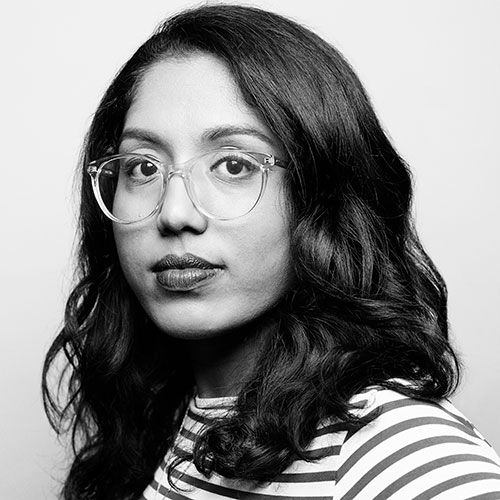
Shortly after I graduated from university in 2014, I went for dinner with three college friends, all white women. When the conversation turned to job applications, one expressed frustration that her company’s recent push for diversity had made it difficult for interns like her to get hired. “I don’t think anyone should be getting a job just because of the color of their skin,” she said, turning to me. “You’d hate that too, wouldn’t you?”
I still remember how my face felt both hot and numb, tension coiled hard in my chest. I felt compelled to push back on her implication that hiring minorities meant a lowering of standards. I presented the business case for including a multiplicity of perspectives, an intellectual argument for diversity, but I did not say how the conversation was making me feel.
I’d entered the workforce armed with a copy of Lean In and high hopes to climb the ladder and make a difference. I soon realized that work was much like university: I was usually the only woman of color in the room. When I became an editor a year and a half later, I had the ability to make the kinds of choices I felt passionate about—to hire, give assignments and elevate voices—but I rarely saw myself reflected at the mostly white decisionmaking table. Eager to grow, I devoured books and articles on leadership, usually by white women who preached about ambition, seizing opportunities, negotiating salaries and talking in meetings. The message was clear: get the system to work for you.
For many years, I tried that. Corporate diversity has always tended to reward people of color like me—well-off, highly educated minorities whose presence assuages the guilt of white leaders without requiring them to create truly inclusive companies. Any hostility I faced just became more fuel to prove myself, as if there might be a magical threshold that, once crossed, would stop anyone from implying I was a “diversity hire.”
It was easy to believe I was showing up authentically at work when I was editing stories on gender and race, or speaking up if I felt our editorial choices were problematic. I found it much harder if the person I needed to advocate for was me. All good, I would say when a colleague apologized for a hurtful remark, totally fine. I might cry in the bathroom or when I got home, but most of the time I would swallow it all down, my anger or my sadness, and put on my good-soldier uniform to complete the next task. I had understood that leadership meant being strong and upbeat under pressure. Only in the past year—after equity, diversity and inclusion became a core part of my job—has it become clear that the leadership models I’ve internalized are profoundly lacking when it comes to creating an anti-racist workplace.
Journalists often talk about compassion fatigue, the diminished ability to empathize when we are routinely exposed to traumatic stories and situations, as if getting hardened to the horrors of the world is an inevitable part of the job. In newsrooms, as in many offices, we’re encouraged not to bring our emotions to work. The story comes first. You are not the story. The old journalistic maxims are drilled into my psyche and I’ve lived by them, reporting on terrorism while barricaded in a Paris restaurant and editing pieces about the risks of COVID-19 to ethnic minority communities while worried for my parents, both frontline doctors. If I let myself feel all my feelings, I told myself, I wouldn’t last another day on the job.
As is the case for many women of color, not allowing anyone to see my pain at work let me convince myself, and my colleagues, that I was so resilient I didn’t need support. The truth is that we can’t even begin to change the system if we aren’t talking about how the system makes us feel. Empathy is core to doing the kind of journalism that serves and reflects different communities. It’s also crucial within our own newsroom: if we want to retain the journalists from marginalized groups who are best equipped to tell these stories, we cannot expect them to leave their emotions at home.
Transforming our workplaces and building solidarity has become increasingly urgent in the past few years: the #MeToo movement opened up conversations about the masculine-coded forms of leadership that led to sexual harassment, assault and bullying, while recent stories from the “girlboss” era of the 2010s showed how white women have weaponized and abused their power to create their own toxic workplaces. But knowing what behaviors to avoid isn’t the same as demonstrating the more humane model that can take its place.
Perhaps that’s because we’re still forging it. In March, after a white male shooter killed eight people in Atlanta, six of them Asian women, I watched two of my closest colleagues and friends, both Asian American women, cry in calls with members of senior management. For the first time, I resisted the urge to hide my tears. I was learning from them the value of showing up with my heart, rather than just my words. It can be a radical act to allow yourself to be seen.
In the weeks since, I’ve thought a lot more about the opportunity I have as a woman of color to help redefine what leadership looks like. Unlike the decisiveness or risk-taking usually associated with male leaders, strengths like vulnerability or collaboration are often described as “feminine” leadership qualities, a “softer” set of skills. This year, I’ve decided to think of them as crucial leadership qualities.
I know now that holding it together is not the only way to earn respect or be seen as professional. I am having more honest conversations with my colleagues than ever before—saying when I am hurting and when they have hurt me. I am raising my expectations about how I should be treated, communicating when my colleagues are being good allies and when they are not, and listening when I might be falling short too. When I receive apologies now, I try not to swallow my pain, but instead say, Thank you, I appreciate that.
Seeing what’s possible
Jasmine Aguilera, staff writer

I heard the term “internalized racism” for the first time during a Chicano Studies class in college. I had not realized until then that I thought of myself as inferior because of my Mexican American upbringing, that I felt English was superior to Spanish and that I believed the closer I could align myself to white America, the better. I did all of this subconsciously and have worked to move past my own inferiority complex and internalized racism ever since. But after observing my Black and AAPI colleagues over the last year, I know that I still have much to unlearn.
In August 2019 a gunman traveled roughly 11 hours to kill Latinos in my hometown of El Paso, Texas, at a Walmart where my uncle has worked for well over a decade. I was crushed for my beautiful city and for the more than 20 people who were killed. Still, though I was heartbroken and filled with rage, I showed up to work ready to report. I put on that brave, resilient front that so many BIPOC journalists have perfected to make others feel comfortable while their communities are under attack. Again, I did this subconsciously. I showed no emotion and pitched angles I knew I could report because of my connections in the city, but I didn’t push my white top editors to do anything more than what they thought was necessary. It didn’t even occur to me that I could.
In the immediate aftermath of the shooting, TIME published several online articles about what happened in El Paso, some of which I wrote or helped report, and though I am proud of those stories, I now know our newsroom could have done better. In print, we published a powerful cover package that used the El Paso news as a hook to talk about gun control and domestic extremism, but it did not do a deep examination of the ways anti-Latino sentiment plays out in the U.S., nor did it create space to empower Latinos.
Months later, when Derek Chauvin murdered George Floyd in Minneapolis, and months after that when a white gunman killed six Asian women at spas in Atlanta, my colleagues took another approach, demonstrating the power of good and thoughtful journalism with the aim of uplifting those most devastated by these atrocities. They wrote tributes to their communities and centered the perspectives of artists, activists and those most greatly impacted. And they worked with our top editors to put these stories on the cover. My colleagues challenged norms that have existed in newsrooms across the country for so long, the kind of status quo that made me unconsciously lax about how we covered the El Paso shooting.
I have to thank my Black and Asian and Asian American colleagues. When they stood up for their communities, they also showed me what is possible. And I’m not going to wait until the next atrocity to insist on coverage that empowers Latinos and a newsroom environment that allows us to grow.
Centering the right voices
Paulina Cachero, editorial producer
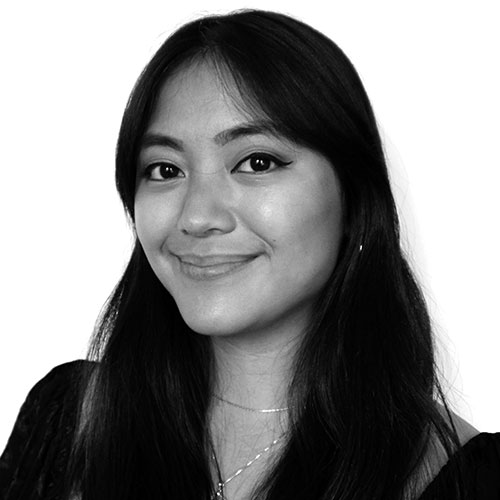
The morning after a shooter opened fire at three spas in Atlanta, killing six Asian women, TIME’s editorial staff gathered online for a daily meeting to discuss how to cover the mass shooting. It wasn’t long before multiple colleagues were discussing sex work, rather than the tragedy at hand. I was speechless. After two of my Asian and Asian American colleagues intervened and others jumped in to support them, the conversation turned away from speculation based on stereotypes and back toward the humanity of the women who were killed.
That day, I felt a paralyzing fear and anguish at the violence, a nadir in a long year of increased anti-Asian hate and attacks stoked by xenophobic rhetoric about the coronavirus from former President Trump. But I also felt a quiet, simmering anger that a white man who took the lives of eight people could claim that race played no role in his rampage and that authorities seemed to accept this denial at face value while ignoring the lived experience of their Asian neighbors, friends and family members. I watched as major news organizations parroted police statements that the attack was “not racially motivated” but instead occurred because the suspect who claimed he had a “sex addiction” had “a bad day.” I often wonder what TIME’s coverage would have looked like if we did not have journalists in the room who had experienced the compounding effects of misogyny and racism that come with being an Asian woman.
Their voices were critical to the coverage. Within hours of the shooting, many of us had jumped online to both coordinate stories and comfort one another. I exchanged a flurry of late-night texts with a friend and colleague, trading ideas for articles and sharing our distress. One colleague aggregated resources on how to support the Asian American and Pacific Islander community; another wrote a love letter to Asian Americans. And, determined not to trigger readers with traumatic imagery, a photo editor commissioned art for TIME’s cover that pushed back against a narrative of victimhood and showcased the strength of Asian women.
As an early-career journalist, I’m still learning how much of myself I can—and want to—bring to work. Growing up in Oklahoma, where 74% of the population is white and only 2.4% is of Asian descent, I frequently felt othered, unsure of myself and my place. And I am not alone. The experience of many Asian Americans is a dichotomy: we are made to feel like conspicuous foreigners, yet subliminal in the black and white tapestry of America. And for this reason, I often hesitate to speak up even when my lived experience means I can bring an important perspective to the conversation. Watching how my colleagues responded to this tragedy showed me the power in refusing to be silent—and that, even when racing to keep up with an impossibly fast news cycle, it’s still possible to lead with compassion and humanity.
Read more: ‘We Are Always Waiting Our Turn to Be Important.’ A Love Letter to Asian Americans
Learning by example
Jenna Caldwell, production associate
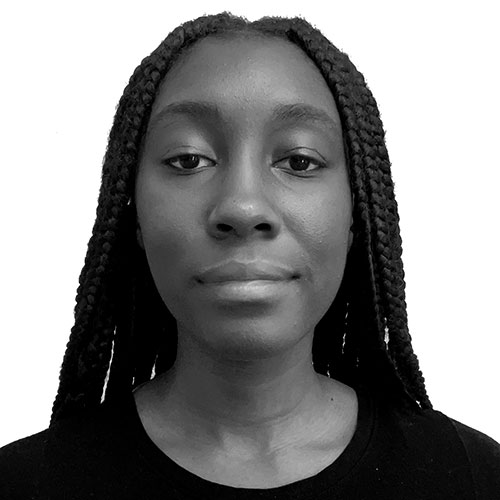
I graduated from Columbia University Graduate School of Journalism in May 2020 and started working for TIME the following month—my first big-girl job—during a pandemic, amid the protests for Black lives.
In graduate school, especially at a predominantly white, elite institution, there’s this pressure, fueled by a sense of competition, to go out, find your story and file it, just get it done. In hindsight, I realize that pressure was traumatizing. Less than four weeks in, I was covering an attempted double homicide in the housing projects in Far Rockaway, Queens, with no one checking in on how I was doing, even as I hung around outside of one of the victim’s hospital rooms desperate to get a quote from his mother so as not to return to class empty-handed.
That semester, I also covered the murder of a Black man by his brother—where I had to sit through the horrific details in court—the brutal and fatal attacks of Black trans women, the conditions that Black and brown housing-project tenents were subject to, the impact of the Newark Water Crisis on its poor, Black residents and so much more. At every corner, I was confronted with a new trauma and at every corner I was critiqued—I should have found a better subject, I should have gotten a better quote. I felt like a shell of myself, someone going through the motions, operating on the hum of anxiety. In the same vein that Black people, and their humanity, are disregarded when their murders become viral, or when the only reflection they see of themselves in the media involves pain and suffering for the sake of storytelling, I was expected to become desensitized to the subjects I covered. I eventually broke down. I called my mom, crying to her that I didn’t have what it took to be a journalist, if this is what journalism entailed. I wanted to drop out.
It didn’t help that I was discouraged from reporting on the things I wanted to cover—I was told that identity and culture weren’t beats, and if I wanted to be taken seriously, I couldn’t write about things like colorism or the natural-hair movement. When I made a complaint about treatment by a faculty member, I was told that the journalism world wasn’t “soft and fluffy” and I would have to get over it.
So I came to TIME thinking that to be good at my job, I could not be vulnerable. I second-guessed my pitches and my work, worried that my ideas for culture stories and profiles would be dismissed as “fluff.” I was so relieved to be wrong. My mentor, matched with me through the BIPOC employee resource group, is one of our staff writers, and she not only helps me with the mechanics of crafting culture pitches, but she also understands the significance of the people I put forward for consideration. After one of my ideas was declined, despite our best efforts to make the case, she encouraged me to keep trying, and now I’m thrilled to be working on a profile of a South American artist for one of our biggest franchises.
Advocating on behalf of yourself isn’t something you learn in school— frankly, in my experience, it was discouraged. It’s something you can only truly learn by witnessing how it’s done up close. I’ve seen the way my colleagues speak up no matter what, whether it’s to demand better working conditions through the union or to convince the higher-ups of a story’s merits. They have inspired me to advocate not only for my work, but also for myself. Over the past year, I’ve fought to become a full-time employee and to be paid a higher salary. My peers have made me a better video producer, a better journalist and, ultimately, a stronger person.
So at 23 years old, as a young Black woman, I can’t say it’s been easy to cover the news. I am still faced with emotionally trying assignments; I was asked to produce a profile of Sybrina Fulton, Trayvon Martin’s mother, in August, the week Jacob Blake was shot. And I may always have to oversell a pitch and explain the value of telling Black stories that aren’t reduced to pain or suffering. But my peers have given me a community to lean on, and a model to ensure that my voice is heard.
More Must-Reads from TIME
- Cybersecurity Experts Are Sounding the Alarm on DOGE
- Meet the 2025 Women of the Year
- The Harsh Truth About Disability Inclusion
- Why Do More Young Adults Have Cancer?
- Colman Domingo Leads With Radical Love
- How to Get Better at Doing Things Alone
- Michelle Zauner Stares Down the Darkness